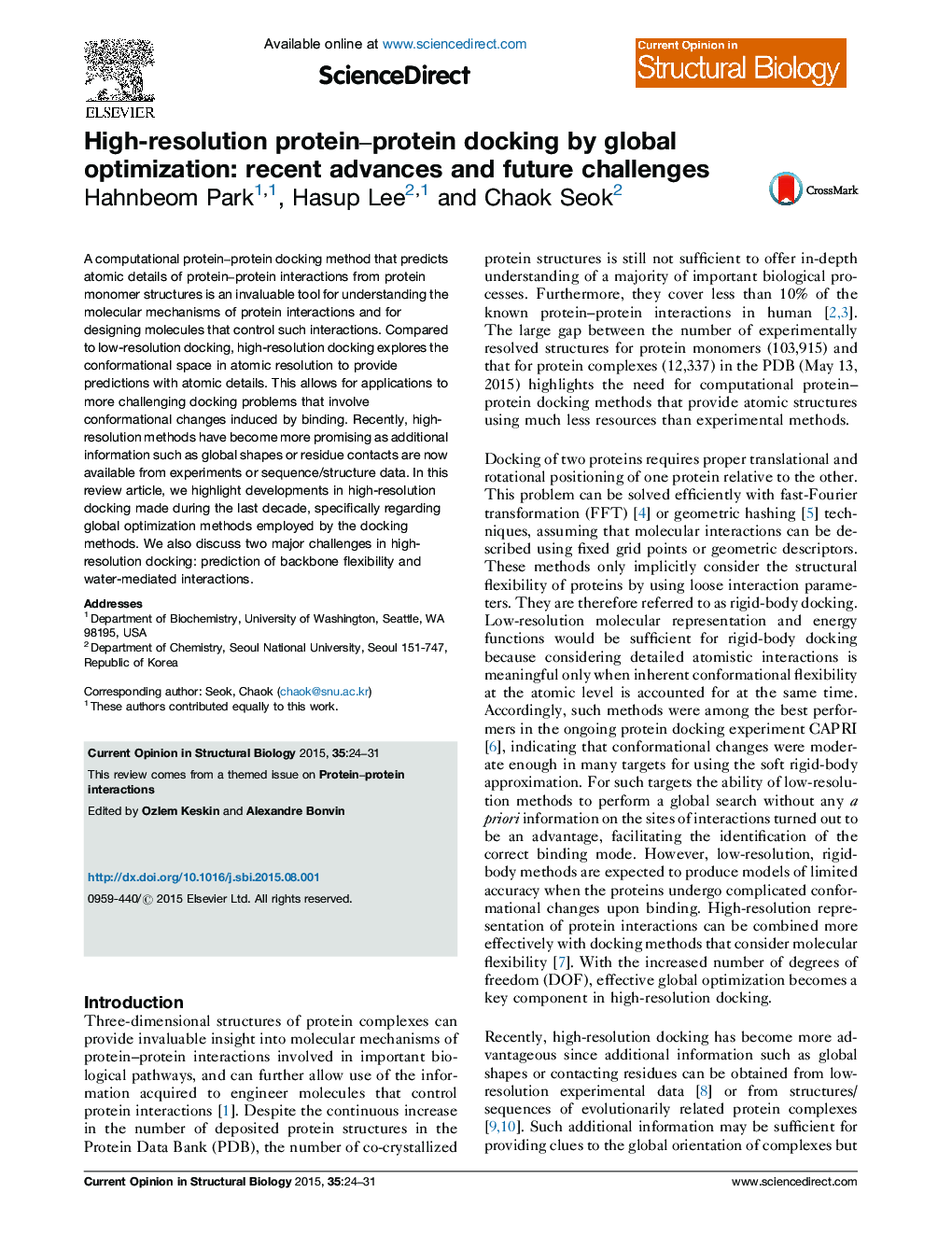| Article ID | Journal | Published Year | Pages | File Type |
|---|---|---|---|---|
| 8319829 | Current Opinion in Structural Biology | 2015 | 8 Pages |
Abstract
A computational protein-protein docking method that predicts atomic details of protein-protein interactions from protein monomer structures is an invaluable tool for understanding the molecular mechanisms of protein interactions and for designing molecules that control such interactions. Compared to low-resolution docking, high-resolution docking explores the conformational space in atomic resolution to provide predictions with atomic details. This allows for applications to more challenging docking problems that involve conformational changes induced by binding. Recently, high-resolution methods have become more promising as additional information such as global shapes or residue contacts are now available from experiments or sequence/structure data. In this review article, we highlight developments in high-resolution docking made during the last decade, specifically regarding global optimization methods employed by the docking methods. We also discuss two major challenges in high-resolution docking: prediction of backbone flexibility and water-mediated interactions.
Related Topics
Life Sciences
Biochemistry, Genetics and Molecular Biology
Biochemistry
Authors
Hahnbeom Park, Hasup Lee, Chaok Seok,
